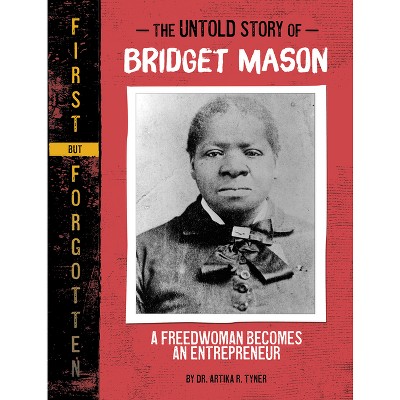$65.00 sale price when purchased online
$68.00 list price
Target Online store #3991
About this item
Highlights
- How the urban spectator became the archetypal modern viewer and a central subject in late nineteenth-century French art Gawkers explores how artists and writers in late nineteenth-century Paris represented the seductions, horrors, and banalities of street life through the eyes of curious viewers known as badauds.
- About the Author: Bridget Alsdorf is associate professor in the Department of Art and Archaeology at Princeton University.
- 296 Pages
- Art, History
Description
About the Book
"Gawkers explores how artists and writers in late nineteenth-century Paris represented the seductions, horrors, and banalities of street life through the eyes of curious viewers known as badauds. In contrast to the singular and aloof bourgeois flãaneur, badauds were passive, collective, instinctive, and highly impressionable. Above all, they were visual, captivated by the sights of everyday life. Beautifully illustrated and drawing on a wealth of new research, Gawkers excavates badauds as a subject of deep significance in late nineteenth-century French culture, as a motif in works of art, and as a conflicted model of the modern viewer. Bridget Alsdorf examines the work of painters, printmakers, and filmmakers who made badauds their artistic subject, including Fâelix Vallotton, Pierre Bonnard, Henri de Toulouse-Lautrec, Honorâe Daumier, Edgar Degas, Jean-Lâeon Gâerãome, Eugáene Carriáere, Charles Angrand, and Auguste and Louise Lumiáere. From morally and intellectually empty to sensitive, empathetic, and humane, the gawkers these artists portrayed cut across social categories. They invite the viewer's identification, even as they appear to threaten social responsibility and the integrity of art. Delving into the ubiquity of a figure that has largely eluded attention, idling on the margins of culture and current events, Gawkers traces the emergence of social and aesthetic problems that are still with us today." - publisher's website.Book Synopsis
How the urban spectator became the archetypal modern viewer and a central subject in late nineteenth-century French art
Gawkers explores how artists and writers in late nineteenth-century Paris represented the seductions, horrors, and banalities of street life through the eyes of curious viewers known as badauds. In contrast to the singular and aloof bourgeois flâneur, badauds were passive, collective, instinctive, and highly impressionable. Above all, they were visual, captivated by the sights of everyday life. Beautifully illustrated and drawing on a wealth of new research, Gawkers excavates badauds as a subject of deep significance in late nineteenth-century French culture, as a motif in works of art, and as a conflicted model of the modern viewer. Bridget Alsdorf examines the work of painters, printmakers, and filmmakers who made badauds their artistic subject, including Félix Vallotton, Pierre Bonnard, Henri de Toulouse-Lautrec, Honoré Daumier, Edgar Degas, Jean-Léon Gérôme, Eugène Carrière, Charles Angrand, and Auguste and Louise Lumière. From morally and intellectually empty to sensitive, empathetic, and humane, the gawkers these artists portrayed cut across social categories. They invite the viewer's identification, even as they appear to threaten social responsibility and the integrity of art. Delving into the ubiquity of a figure that has largely eluded attention, idling on the margins of culture and current events, Gawkers traces the emergence of social and aesthetic problems that are still with us today.Review Quotes
"[Gawkers] serves a valuable purpose, both as an encyclopedia of nineteenth-century images of gawking and as an introduction to the subject of the badaud."---Patricia Mainardi, Journal of Modern History
"
Gawkers thoroughly succeeds in its mission to make us pay attention to those rubbernecking onlookers who stand at the margins of the scene; their perspective reveals new elements of Parisian modernity. Enlivened by fluid writing, close nuanced analysis, and a rich corpus of visual material, Gawkers will be of great use to specialists, and a thoroughly enjoyable read for a wider audience.
"---Samuel Raybone, H-France"[Gawkers] offers a genuinely new way of considering printmaking, its makers and its audiences during an especially rich moment in the medium's history and is sure to inspire future work in this field."---Britany Salsbury, Print Quarterly
"Alsdorf's fine monograph allows a fresh perspective on late-nineteenth-century France, on its spectacles and streets, and on the figures which depicted and shaped a rapidly changing world. It is a welcome addition to a growing body of work that seeks to offer a counterpoint to the vision of leisure and flânerie that has dominated discussions of late-nineteenth-century French art, and will no doubt benefit scholarship in French studies, art history, and theatre studies."---Claire Moran, French Studies
"In this wide-ranging and content-rich study, Alsdorf succeeds in bringing the many facets of badauderie closer to her readers. She elucidates how closely the act of gawking in urban space is intertwined with art's ability to get people to look.... Her methodological approach is also enriching with a view to current affairs: the question of how a medium makes its audience its own subject proves fruitful beyond nineteenth-century Paris."---Michelle Sturm-Müller, 21: Inquiries into Art, History, and the Visual
"The crowd as Alsdorf envisions it turns out to be multifaceted, variously dense, and dependent on an unprecedented relationship to the spectacular. For those who follow developments in the field of the history of art in the 19th century, Alsdorf's voice has gradually revealed itself, original, elegant, knowing how to combine descriptive precision and an overall vision of the dimensions of a period. Following her masterful analysis of the portraits of Fantin-Latour from her previous book (Fellow Men, 2013) is this fascinating contribution, with tight argumentation and marvelous illustrations."---Julien Zanetta, Studi Francesi
"Bridget Alsdorf is a wonderfully clear writer. . . . Gawkers is engaging, thoroughly researched, and generously illustrated."---Heather Saunders, ARLIS/NA Reviews
"A rich, dense, wide-ranging survey whose central figure is the Swiss artist Félix Vallotton. . . . Alsdorf is an admirable close reader of images, clever at picking out, in a mass of bodies, a tiny figure who is doing nothing more than staring back at us, as if, across the centuries, he has spotted us gawking at him and is gawking back."---Julian Barnes, New York Review of Books
"Alsdorf acts as a knowledgeable guide to Parisian art of the nineteenth century. . . . Gawkers is recommended for enthusiasts of art of this period, as it effectively supplies a missing link for non-francophones, introducing them to the complex social signals and commentary that is present in the art we so often take for granted."---Alexander Adams, Alexander Adams Art
"Handsomely produced, exhaustively researched, Gawkers combines elegant prose with a knowingness that mimics the sly humour of its key figures. . . and penetrating visual analyses of their works"---Lesley Stevenson, World of Interiors
About the Author
Bridget Alsdorf is associate professor in the Department of Art and Archaeology at Princeton University. She is the author of Fellow Men: Fantin-Latour and the Problem of the Group in Nineteenth-Century French Painting (Princeton).Dimensions (Overall): 10.8 Inches (H) x 8.3 Inches (W) x 1.0 Inches (D)
Weight: 2.9 Pounds
Suggested Age: 22 Years and Up
Sub-Genre: History
Genre: Art
Number of Pages: 296
Publisher: Princeton University Press
Theme: Modern (late 19th Century to 1945)
Format: Hardcover
Author: Bridget Alsdorf
Language: English
Street Date: March 22, 2022
TCIN: 93898642
UPC: 9780691166384
Item Number (DPCI): 247-29-3632
Origin: Made in the USA or Imported
If the item details above aren’t accurate or complete, we want to know about it.
Shipping details
Estimated ship dimensions: 1 inches length x 8.3 inches width x 10.8 inches height
Estimated ship weight: 2.9 pounds
We regret that this item cannot be shipped to PO Boxes.
This item cannot be shipped to the following locations: American Samoa (see also separate entry under AS), Guam (see also separate entry under GU), Northern Mariana Islands, Puerto Rico (see also separate entry under PR), United States Minor Outlying Islands, Virgin Islands, U.S., APO/FPO
Return details
This item can be returned to any Target store or Target.com.
This item must be returned within 90 days of the date it was purchased in store, shipped, delivered by a Shipt shopper, or made ready for pickup.
See the return policy for complete information.












